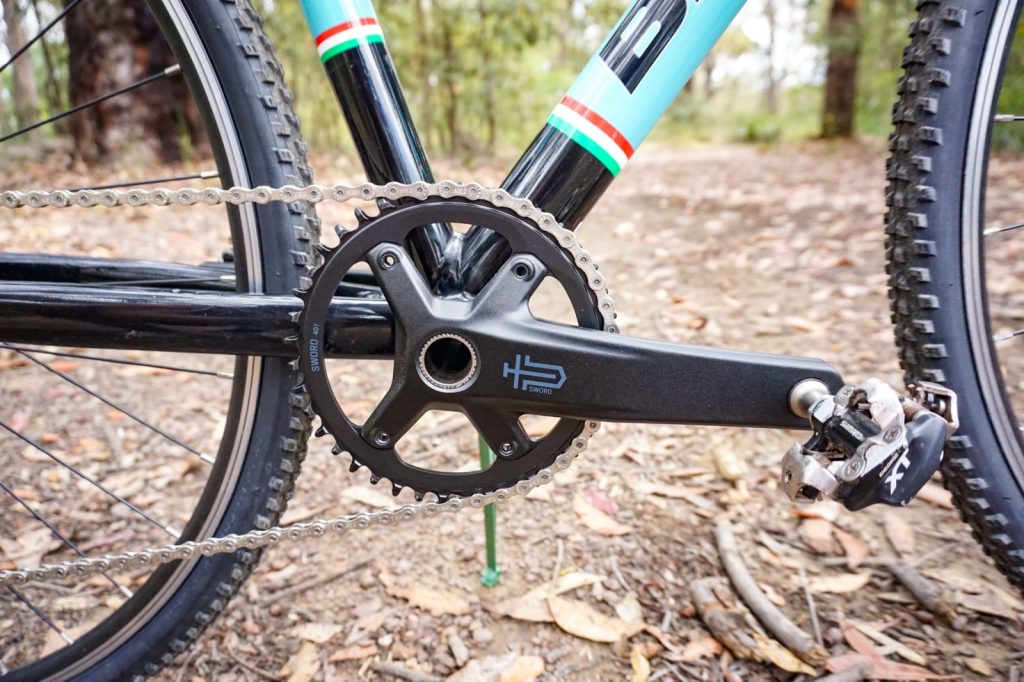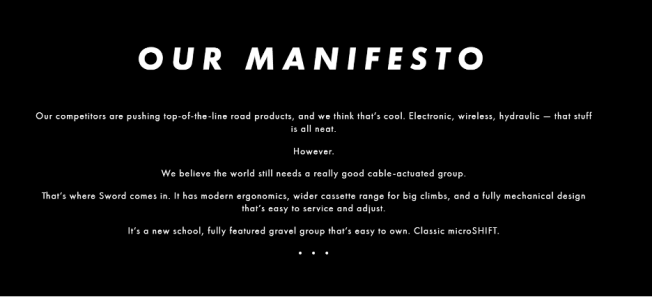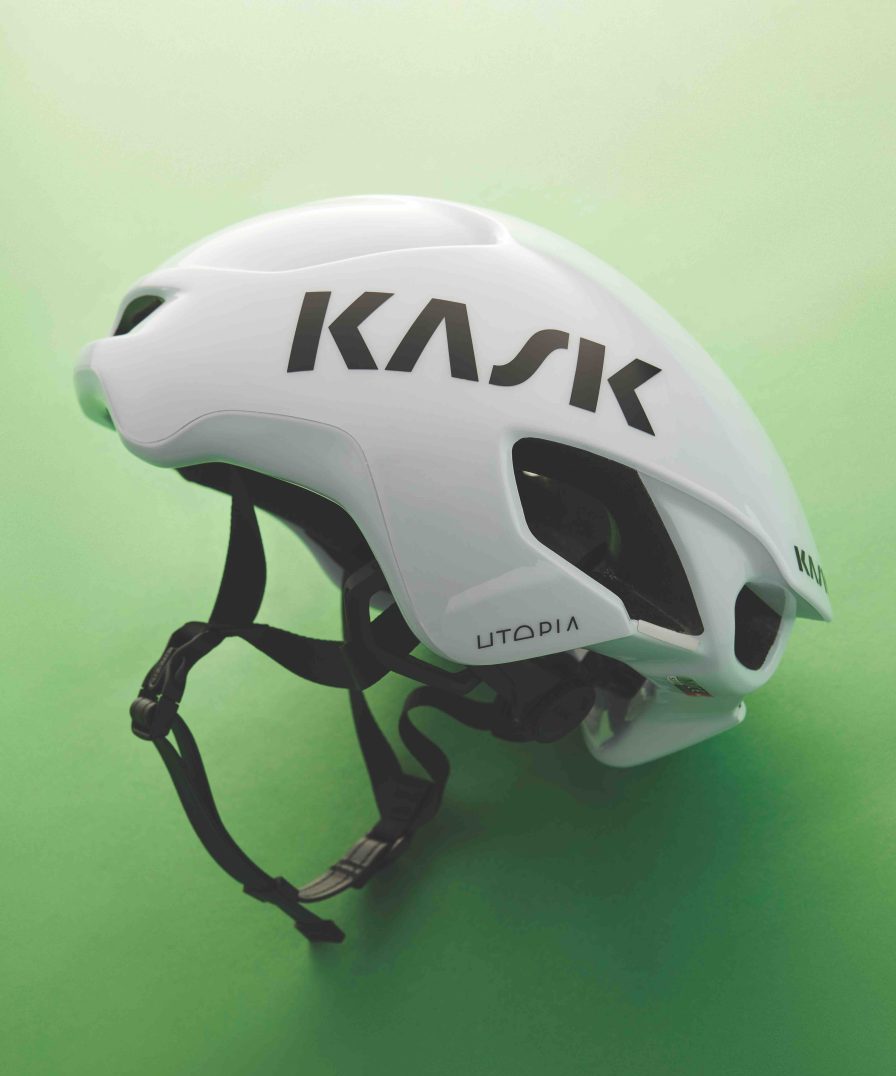Do you ever look at the second-hand bike market and marvel at how much has changed in the past decade?
A few versions of Dura-Ace ago, drop-bar bike tech news used to lead with adding a sprocket to the rear cassette or removing threaded bottom brackets. We’ve come a long way… fast.

Words Jack Lynch
When I log on to Facebook Marketplace and see rim brakes, gear cables (which you can actually see!), round frame designs and 23mm tyres (with tubes, no less!) I don’t see an antiquated write-off. I see opportunity.
People are selling for peanuts 10- or 15-year-old bikes that would once have spun heads at a bike shop. Often they’re in great condition. Sometimes they’re not.
I’m thinking of a steel Moser with mint condition Dura-Ace 7700 and Spinergy wheels for a $500 asking price.
A Team Saeco painted Cannondale CAAD 4 with wrecked Ultegra parts and mint frame asking $650. (I actually bought this one for $250…)
A Colnago C40 with Campag Centaur for $350.
And the bike featured here, an aluminium Bianchi Zurigo CX bike from 2013-14 with cantilever brakes, cheap wheels with sealed-bearing hubs and 32 spokes, Sram Rival 10-speed, FSA cranks, Vittoria tyres, and a questionable finishing kit.
I bought this commuter rig from a person who had only used it for commuting, and it lived outside under a tarp. $400.
Yes, it’s a Bianchi I’d never heard of before.
Yes, it is a cheap frame (hardly a real Bianchi) with average, clapped-out parts.
Yes, it is the perfect bike to clean-up and rebuild.

The purpose
A confession: I don’t need this bike.
I’m lucky to already have more than one commuter and a gravel bike.
I don’t race CX and can’t see that happening any time soon.
However, I was lured in by the price and by a passion to give nice bikes a new start – a modern touch on an ageing body.
Enter Microshift Sword.

On Microshift
If you haven’t heard of Microshift, it’s a Taiwan-based company that has been building drivetrain parts since 1999. It has been particularly popular with Shimano users as it has the same cable pull ratio as Shimano and can therefore be used as an alternative for shifters or derailleurs.
You’ll often see it on entry-level mountain bikes or kids’ bikes as a way for bike companies to reduce production costs, but there have been multiple road iterations and now Sword, the gravel groupset.
The brand unashamedly lives in the affordable sector of the bike industry, offering consumers an alternative to larger and more marketable companies at a fraction of the price and compromises many riders will neither notice nor care about.

The build: swapping 10-speed Sram Force with 10-speed Microshift Sword
Microshift Sword comes in either a 1x or 2x build and in a 9-speed or 10-speed version.
I chose 1x40T with an 11-48T cassette and opted against having dropper post compatibility in the LH brake lever.
The derailleur is robust and is clutched, the shifters have a great tactile feel on the hoods, but when building I was a little unsure about the fibreglass finish on the brake lever, which may feel a bit soft when out riding.
I was keen to try the shifters, with the large paddle on the lever shifting up the cassette, the small, upper paddle shifting down the cassette.
Building 10-speed cantilever brakes on a 1x set-up is about as easy as it gets and it took me less than an hour to get everything humming.
It’s unsurprising that everything went together so well and although it’s not as fancy compared with my usual gravel set-up (Sram AXS), I can’t fault the design. I am particularly impressed with the finish on the cranks and rear derailleur.
The drivetrain felt solid in the workstand, aided by the 10-speed YBN chain which looks comfortingly bulky alongside today’s 12-speed norm.
For something different I replaced the handlebars and stem with kit from Funn, an MTB company which is dipping its toe in the gravel scene. The bars are almost comical at 500mm long, which gives the bike a unique flavour!
I also removed the wire-beaded 32mm Vittoria tyres with 33mm tubeless ready Maxxis All Terrane tyres. They are much suppler and suited to an off-road environment. (The pitfall of this project is that 33mm is the max recommended tyre size for the frame – it’d be nice to squeeze in 40mm tyres but it’ll be very tight.)

The ride
CX bikes are totally different to a modern gravel bike. They’re designed to be more agile and ridden hard and fast in all kinds of crazy conditions. That combined with the 500mm handlebars from Funn has made for one seriously weird bike, but one that’s given me plenty of fun on two wheels.
The Microshift Sword group behaved flawlessly throughout the test period. I didn’t have a single issue with it performing exactly as Microshift promises in its marketing materials: it is a “really good cable-actuated group”.
Shifting under load was great, there was no chain slap on rough surfaces and the wear on the chainring and cassette was minimal.
The shifting mechanism in the lever was intuitive – even though the large paddle moves the derailleur the opposite way of a Shimano STI – and I didn’t once hit the wrong level and end up in a bad gear.
The finish on the brake lever is unique to Microshift – an alloy body coated in fibreglass. It feels different to other drop bar levers and, if anything, the finish provided some grip when compared with carbon or alloy ones. Sword uses a semi short-pull lever, which meant the cantilever brakes on this old CX felt snappy and powerful – certainly not to hydraulic disc levels, but better than with the old Sram groupset which the bike came with.

The wash-up
The Bianchi Zurigo was always an entry-level Bianchi is a segment of the sport the brand is not known for. It was originally overpriced at around $2,500 in 2013/14.
I bought the bike for $400 and sold the Sram groupset for $100, essentially paying $300 for the frame and wheels, and other parts.
To build the bike, I needed:
10-speed Microshift Sword: Total $735
- SB-G7000 levers – $254.95
- RD-G7005 derailleur – $129.95
- FC-G7000-40 cranks – $219.95
- CS-G104 11-48 cassette – $129.95
Others: Total $522
- 10-speed YBN chain – $39.95
- Funn handlebar 500mm – $99.95
- Funn stem 80mm – $129.95
- Shimano BBR60 bottom bracket – $32
- Maxxis All Terrane tyres – $94.95
- Handlebar tape – $29.95
The Microshift Sword is a huge improvement on the first Sram Rival iteration in every way – function, weight and style – and the bars, stem and tyres modernise the bike and give it a bit of personality.
For a total cost of around $1500 for this new bike to my collection as a commuter, second gravel/off-road and maybe a future CX event (maybe…) it seems like decent value.
When the price of everything keeps going up, it’s brands like Microshift which gives us a chance to remember what we love riding and encourage others to get involved.
If you have a friend who’s keen on riding but doesn’t want to get into the market with something brand new from a shop, maybe a custom Microshift rebuild from a Facebook bargain is something on the cards!



